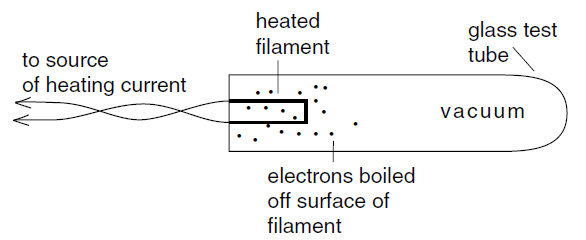


تاريخ الفيزياء

علماء الفيزياء


الفيزياء الكلاسيكية

الميكانيك

الديناميكا الحرارية


الكهربائية والمغناطيسية

الكهربائية

المغناطيسية

الكهرومغناطيسية


علم البصريات

تاريخ علم البصريات

الضوء

مواضيع عامة في علم البصريات

الصوت


الفيزياء الحديثة


النظرية النسبية

النظرية النسبية الخاصة

النظرية النسبية العامة

مواضيع عامة في النظرية النسبية

ميكانيكا الكم

الفيزياء الذرية

الفيزياء الجزيئية


الفيزياء النووية

مواضيع عامة في الفيزياء النووية

النشاط الاشعاعي


فيزياء الحالة الصلبة

الموصلات

أشباه الموصلات

العوازل

مواضيع عامة في الفيزياء الصلبة

فيزياء الجوامد


الليزر

أنواع الليزر

بعض تطبيقات الليزر

مواضيع عامة في الليزر


علم الفلك

تاريخ وعلماء علم الفلك

الثقوب السوداء


المجموعة الشمسية

الشمس

كوكب عطارد

كوكب الزهرة

كوكب الأرض

كوكب المريخ

كوكب المشتري

كوكب زحل

كوكب أورانوس

كوكب نبتون

كوكب بلوتو

القمر

كواكب ومواضيع اخرى

مواضيع عامة في علم الفلك

النجوم

البلازما

الألكترونيات

خواص المادة


الطاقة البديلة

الطاقة الشمسية

مواضيع عامة في الطاقة البديلة

المد والجزر

فيزياء الجسيمات


الفيزياء والعلوم الأخرى

الفيزياء الكيميائية

الفيزياء الرياضية

الفيزياء الحيوية

الفيزياء العامة


مواضيع عامة في الفيزياء

تجارب فيزيائية

مصطلحات وتعاريف فيزيائية

وحدات القياس الفيزيائية

طرائف الفيزياء

مواضيع اخرى
The Filament
writer :
E. R. Huggins
source :
Physics 2000
page :
646
17-12-2020
1953
The Filament
As shown in Figure (1), the source of the electrons in an electron gun is the filament, a piece of wire that has been heated red-hot by the passage of an electric current. At these temperatures, some of the electrons in the filament gain enough thermal kinetic energy to evaporate out through the surface of the wire. The white coating you may see on a filament reduces the amount of energy an electron needs to escape out through the metal surface, and therefore helps produce a more intense beam of electrons. At standard temperature and pressure, air molecules are about 10- molecular diameters apart as indicated in Figure (2). Therefore if the filament is in air, an electron that has evaporated from the filament can travel, at most, a few hundred molecular diameters before striking an air molecule. This is why the red-hot burner on an electric stove does not emit a beam of electrons. The only way we can get electrons to travel far from the filament is to place the filament in a vacuum as we did in Figure (1).
The better the vacuum, the farther the electrons can travel.

Figure 1: Source of the electrons. The tungsten filament is heated by an electric current. When it becomes red-hot, electrons boil out through the surface. The white coating on the filament makes it easier for the electrons to escape.

Figure 2: Whenever we heat a metal to a high enough temperature, electrons boil out of the surface. But if there is air at standard pressure around, the electrons do not get very far before striking an air molecule.